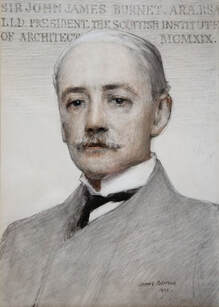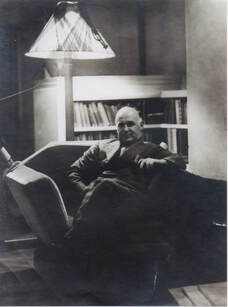Burnet, Tait & Lorne
The practice formed by John James Burnet was one of the most influential in bringing art deco and modernism to Britain, especially in the buildings designed by Thomas Tait. Burnet was born in Glasgow in 1857, his father James Burnet was a prominent Scottish architect. He studied architecture at the Ecole des Beaux-Arts in Paris and eventually settled down to practice in Glasgow. In 1905 he set up an office in London after winning a competition to design new galleries at the British Museum. Thomas Tait had recently joined the practice and moved to London as well. Tait, who had been born in Paisley in 1882, designed a new office for Kodak in Kingsway, a building seen as one of the first steps towards modernism in Britain.
After a falling out with Burnet, Tait rejoined the company in 1918. Between then and the outbreak of the Second World War, Tait designed a series of modernist influenced buildings. These include; houses at Silver End, Essex for Crittall Windows (1928) , The Masonic Hospital in Ravenscourt Park (1934), the extension to the German Hospital, Dalston (1935) and the Glasgow site of the 1938 Empire Exhibition. Burnet retired due to ill health in 1930, with Francis Lorne joining the company. The firm became one of the most prominent and successful of the interwar era. After the second world war, the firm continued with Gordon, Thomas’ son in charge after his father retired in 1952.
Featured Buildings: Daily Telegraph, German Hospital, Greybrook House, Hamilton Terrace, Wells Rise, West End Police Station
The practice formed by John James Burnet was one of the most influential in bringing art deco and modernism to Britain, especially in the buildings designed by Thomas Tait. Burnet was born in Glasgow in 1857, his father James Burnet was a prominent Scottish architect. He studied architecture at the Ecole des Beaux-Arts in Paris and eventually settled down to practice in Glasgow. In 1905 he set up an office in London after winning a competition to design new galleries at the British Museum. Thomas Tait had recently joined the practice and moved to London as well. Tait, who had been born in Paisley in 1882, designed a new office for Kodak in Kingsway, a building seen as one of the first steps towards modernism in Britain.
After a falling out with Burnet, Tait rejoined the company in 1918. Between then and the outbreak of the Second World War, Tait designed a series of modernist influenced buildings. These include; houses at Silver End, Essex for Crittall Windows (1928) , The Masonic Hospital in Ravenscourt Park (1934), the extension to the German Hospital, Dalston (1935) and the Glasgow site of the 1938 Empire Exhibition. Burnet retired due to ill health in 1930, with Francis Lorne joining the company. The firm became one of the most prominent and successful of the interwar era. After the second world war, the firm continued with Gordon, Thomas’ son in charge after his father retired in 1952.
Featured Buildings: Daily Telegraph, German Hospital, Greybrook House, Hamilton Terrace, Wells Rise, West End Police Station


